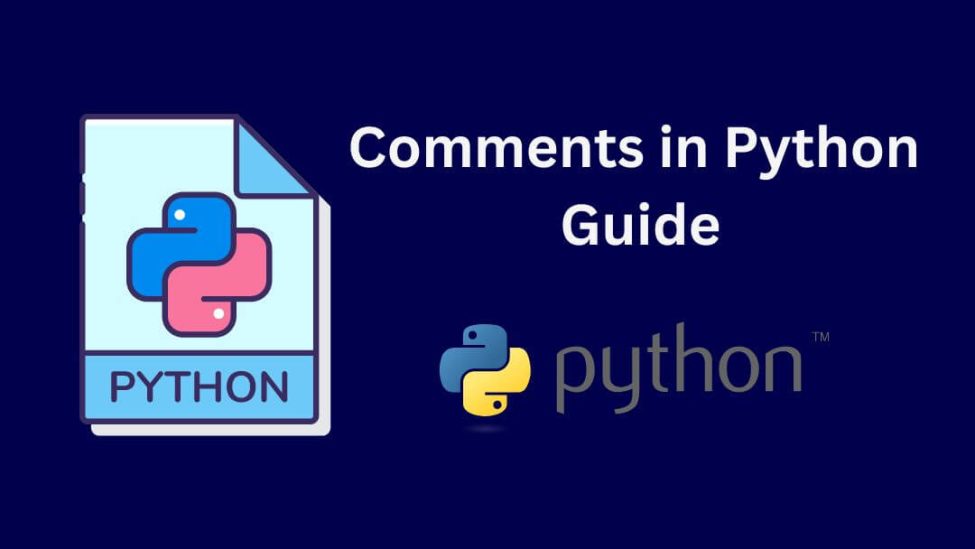Introduction
In Python programming, comments are indispensable tools for enhancing code readability and facilitating collaboration among developers. This comprehensive guide will delve deep into the art of commenting in Python, unveiling the best practices, tips, and techniques to help you elevate your coding prowess and foster better communication within your development team. Let’s dive into comments in Python.

Why Comments Matter
Comments are the unsung heroes of code. They provide context, explanations, and insights into the logic behind a piece of code. Here’s why they matter:
- Clarity: Comments make your code more understandable, especially for others who may work on it in the future.
- Documentation: They serve as live documentation, offering insights into the code’s purpose, functions, and variables.
- Debugging: Well-placed comments can aid in identifying and fixing bugs more efficiently.
- Collaboration: Comments foster collaboration among team members by conveying intentions and thought processes.
Commenting Styles
In Python, there are two primary ways to add comments:
Single-Line Comments
Use the # symbol to create single-line comments. They are ideal for brief explanations or annotations within the code.
The code
# This is a single-line comment
variable = 42 # You can also add comments at the end of a line
Multi-Line Comments
For more extensive comments, Python provides triple-quotes (”’ or “””) to create multi-line comments. These are typically used for docstrings, which are special comments for function and module-level documentation.
The code
”’
This is a multi-line comment.
It can span across several lines.
Use it for more detailed explanations.
”’
Best Practices for Effective Comments in Python
To harness the full potential of comments in Python, follow these best practices:
Be Concise and Clear
Keep your comments concise and to the point. Avoid unnecessary verbosity that can clutter your code.
Explain “Why,” Not Just “What”
Explain the rationale behind the code, not just what the code does. This helps readers understand your thought process.
Use Descriptive Variable Names
Choose descriptive variable and function names to minimize the need for excessive comments.
Update Comments Consistently
Remember to update the comments as your code evolves to reflect any changes. Outdated comments can mislead developers.
Mind Code Formatting
Follow PEP 8 style guidelines for consistent and readable code. Ensure your comments align with the code’s formatting.
Commenting for Specific Use Cases
Documenting Functions
When documenting functions, use docstrings. These special multi-line comments help users understand how to use the function.
The code
def calculate_square_area(side_length):
”’
Calculate the area of a square.
Args:
side_length (float): The length of one side of the square.
Returns:
float: The area of the square.
”’
return side_length ** 2
Inline Comments
Use inline comments sparingly, focusing on complex or non-intuitive parts of the code.
The code
result = some_operation() # Perform the main operation
Conclusion
Mastering the art of commenting in Python is a crucial skill for every developer. Effective comments enhance code clarity, streamline collaboration, and facilitate debugging. By adhering to best practices and understanding when and where to use comments, you can take your Python coding skills to the next level.
Remember: Code speaks to the computer, but comments speak to humans. Strive for clarity and precision in your comments, and your Python projects will thrive.
